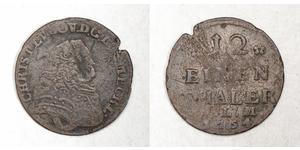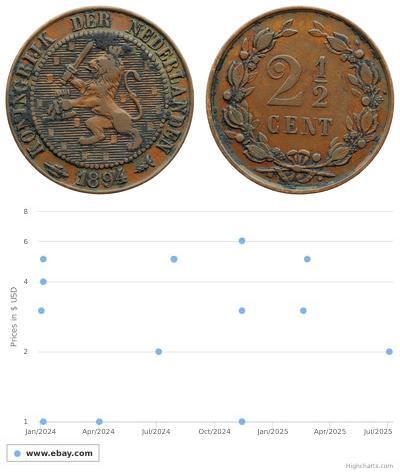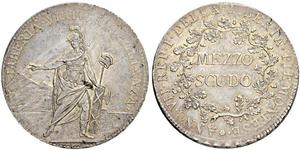[ 1885] Leo VI, the Wise - Byzantine Emperor: August 28, 886 - May 11th 912 A.D. Bronze Follis (24mm, 4.89 gm.), c.900 A.D. Reference: Sear 1729 + LЄOn bASILЄVS ROm' - Bust facing, with short beard, wearing crown and chlamys, and holding akakia in left hand. + LЄOn / Єn ΘЄO bA / SILЄVS R / OMЄOn in four lines. Provided with certificate of authenticity. CERTIFIED AUTHENTIC by Sergey Nechayev, PhD - Numismatic Expert Leo VI, surnamed the Wise or the Philosopher (Greek: Λέων ΣΤ΄ ὁ Σοφός, Leōn VI ho Sophos, 19 September 866 – 11 May 912), was Byzantine emperor from 886 to 912. The second ruler of the Macedonian dynasty (although his parentage is unclear), he was very well-read, leading to his surname. During his reign, the renaissance of letters begun by his predecessor Basil I continued, but the Empire also saw several military defeats in the Balkans against Bulgaria and against the Arabs in Sicily and the Aegean. // Background Leo was born to Eudokia Ingerina who was at the time mistress of Emperor Michael III and wife of his Caesar Basil. Which of the two men was his biological father is uncertain. Basil legally acknowledged Leo as his son but his later treatment of him might suggest that he regarded Leo as Michael's son. In 867, Michael was assassinated by Basil who succeeded him as Emperor Basil I. As the second eldest son of the Emperor, Leo was associated on the throne in 870 and became the direct heir on the death of his older half-brother Constantine in 879. However, he and his father hated each other and Basil almost had Leo blinded as a teenager. On August 29, 886, Basil died in a hunting accident, though he claimed on his deathbed that there was an assassination attempt in which Leo was possibly involved. Domestic policy One of the first actions of Leo VI after his succession was the reburial of Michael III in Constantinople, which may have contributed to the suspicion that he was Michael's son. Seeking political reconciliation, the new emperor secured the support of the officials in the capital, and surrounded himself with bureaucrats like Stylianos Zaoutzes and the eunuch Samonas. His attempts to control the great aristocratic families (e.g., the Phokadai and the Doukai) occasionally led to serious conflicts. Leo also attempted to control the church through his appointments to the patriarchate. He dismissed the Patriarch Photios of Constantinople, who had been his tutor, and replaced him with his own 19-year old brother Stephen in December 886. On Stephen's death in 893, Leo replaced him with Zaoutzes' nominee, Antony II Kaleuas, who died in 901. Leo then promoted his own imperial secretary (mystikos) Nicholas, but replaced him with his spiritual father Euthymios in 907. The magnificent Church of Ayios Lazaros in Larnaca was built during Leo VI rule in the late 9th century. The church is one of the best examples of Byzantine architecture. Leo also completed work on the Basilica, the Greek translation and update of the law code issued by Justinian I, which had been started during the reign of Basil. Bishop Liutprand of Cremona gives an account similar to those related about caliph Harun al-Rashid, stating that Leo would sometimes disguise himself and look for injustice or corruption. On one account, he was even captured by the city guards during one of his investigations. He wanted to know if the city patrol was doing its job appropriately. Late in the evening, he was walking alone and disguised. Though he bribed two patrols for 12 nomismata, and moved on, the third city patrol arrested him. When a terrified guardian recognized the jailed ruler in the morning, the arresting officer was rewarded for doing his duty, while the other patrols were dismissed and punished severely. Foreign policy Leo VI was not as successful in battle as Basil had been. In indulging his chief counselor Stylianos Zaoutzes, Leo provoked a war with Simeon I of Bulgaria in 894, but was defeated. Bribing the Magyars to attack ...
читати далі

|
Добавив:
anonymous 2015-08-19 |
Similar Coin Groups
2025-06-16
- Історичні ціни на монету
2025-05-24
- Нова монета додана до 1/2 Скудо Папська держава (752-1870) Срібло
1/2 Скудо Папська держава (752-1870) Срібло
в групі 3 монет / 3 цін
⇑
1799,ITALIEN. Piemontesische Republik. Republik, 1798-1799. Mezzo scudo An VII (1799). Punkt hinter PIEMONTESE. 17.57 g. Mont. 3. Pagani 1. Selten in dieser Erhaltung / Rare in this condition. Üb ...
Можливо, Вас зацікавить...















-300-150-hMc22nImZq0AAAF45igcj4bn.jpg)






